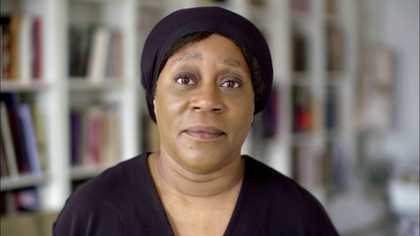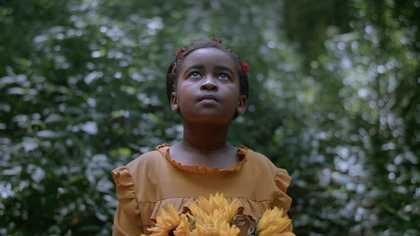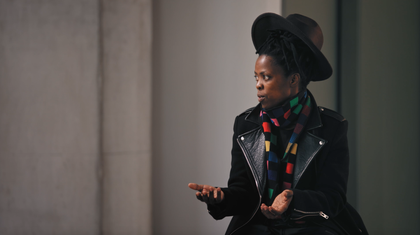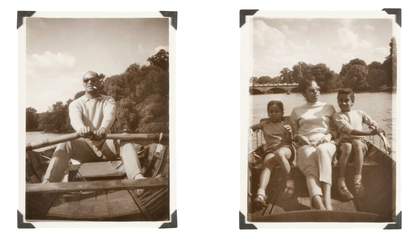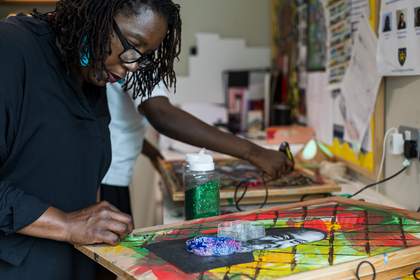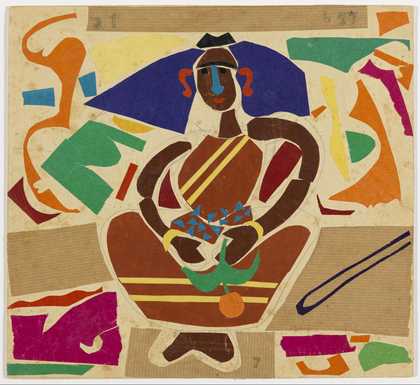We invited teacher Dianne Minnicucci to explore Tate’s collection and select an artwork that could inspire creative activities and meaningful discussions about Black histories and identities.
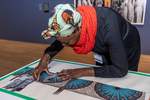
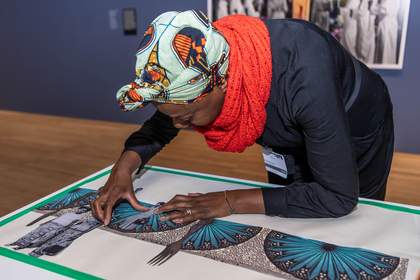
Teacher Spotlight: Zohra Opoku
Explore histories of Blackness and Black identity with teacher Dianne Minnicucci
About Dianne Minnicucci
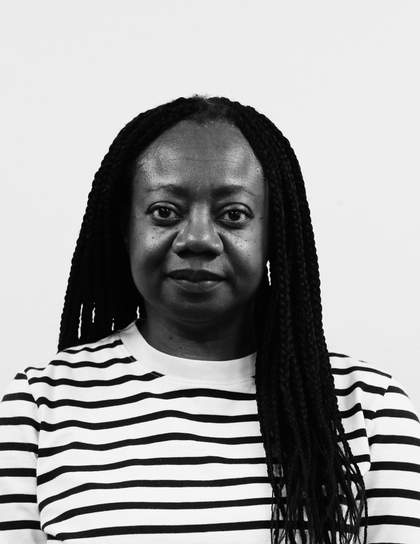
Photo © Jannell Adufo
"I am head of photography at Thomas Tallis School. I am also a photographer interested in pushing the boundaries in photography with an experimental approach, embracing innovative ways in making photographic images. I have recently exhibited at Autograph in London. I am also the founder of Visible Diversity.
About the Artwork
-
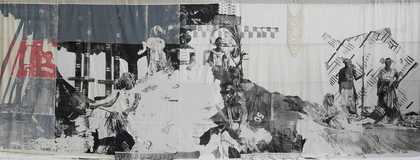
Artwork
Queens and Kings
Zohra Opoku2017
Zohra Opoku is a Ghanaian-German artist working with textiles, photography, and printmaking. She makes large-scale tapestries that explore ideas of history and culture, fashion-related waste, textile production, connections to land, and globalisation.
"I took a year 7 class to see Queens and Kings. Standing in front of it I encouraged the students to take a longer look and they were able to see visual connections such as colours and shapes. They were able to ‘read’ the images."
Dianne Minnicucci
Starting Points
These prompts, devised by Dianne, model the different ways she would approach supporting her students to explore the themes in Queens and Kings.
"The collaborative part of [Opoku’s artwork] is very important to me. Collaboration is something that I’ve always been interested in."
Dianne Minnicucci
- What do you think that the work is about?
- Why do you think that the artist presented the work in this way?
- How would you describe it?
- Have you seen art like this before?
- If you could create your own image in this style, who or what would be in the image? Why?
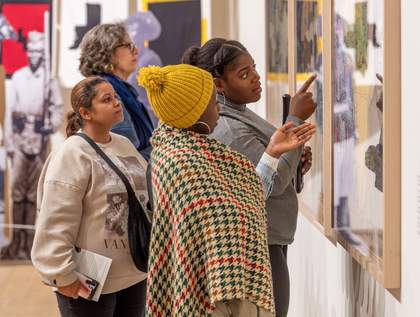
Photo © Tate (Eugenio Falcioni)
Make
In this set of activities devised by Dianne, students are invited to explore layering and collage to tell stories about their lives, families, and heritages.
“I love mixed media and layered artworks in both art and photography: with artwork through layered materials and with photographs in the form of double exposure.”
Dianne Minnicucci
You will need
- Drawing paper
- A large sheet or roll of lining paper
- Safety scissors
- Glue sticks
- Stencils
- Colourful drawing materials (pens, pencils, crayons, paint, or anything else of your choosing)
- Pre-printed images - ask your students to bring in things that represent them. This could include photographs of themselves, their family or friends, their hobbies and interests, objects or patterns that remind them of home. Photocopy their items to create images for your students to work with. You can also photograph and photocopy artworks, objects, and more that you are exploring in your classroom for this activity
Make a Diagram
Duration: 10 Minutes
1. Invite your students to draw a spider diagram exploring the things that they think are important about their home, family, or friends.
What do they choose to focus on? Why?
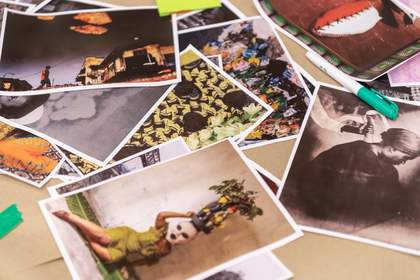
Photo © Tate (Eugenio Falcioni)
Make a Collage
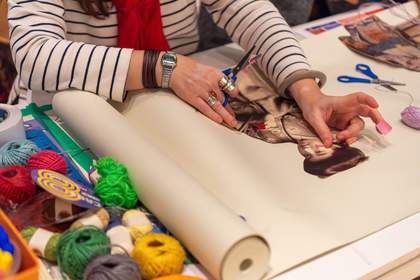
Photo © Tate (Eugenio Falcioni)
Duration: 30 Minutes
- Roll out the lining paper for everyone to work on together in groups
- Cut out a few of the people, objects, or patterns from your photocopied images using safety scissors
- Stick your images to the lining paper to create a collaborative collage
- Use the stencils to add words about your family and friends, your home, and your culture(s).
- Use the rest of the material to draw, paint, and add to the collage together!
Share
Duration: 20 Minutes
- Share your collages with each other or with other groups. Could you cut up your collages and combine them? Do the stories change when you move the pieces around?
- Tell the stories out loud to each other, to create a shared performance of your tapestries!
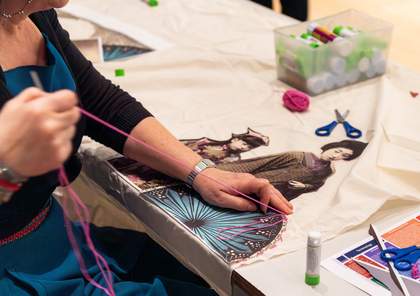
Photo © Tate (Eugenio Falcioni)
Extend
You will need
- A4 pieces of fabric (e.g. an old bedsheet cut into rectangles)
- White acrylic paint
- Some photocopies of family photographs
- Safety scissors
- Stencils
- Coloured paint
- Sewing needles and thread
Make
- Cut out a few of the people, objects, and patterns from your photocopied images.
- Cover them with acrylic paint and stick them onto the fabric, leaving them to dry.
- Use the stencils to add words about your family and friends, your home, and your culture(s).
- Use the needle and thread to trace around the words and images – what embroidery skills could you learn?
- Add paint to your collage in colours and patterns that represent you
Make it Sensory
Additional Options for Sensory Learners
- Use instruments or objects in your classroom to make sounds together, and record everyone to make a collaborative sound tapestry!
- Make a collaborative painting on a large sheet of paper, allowing your students to experiment and play with the paint however they’d like to
- Ask your students to all stick a photograph of themselves onto a large sheet of paper to create a class tapestry that you can display in your classroom. You could pre-prepare pieces of tape or use glue dots to stick the photographs down
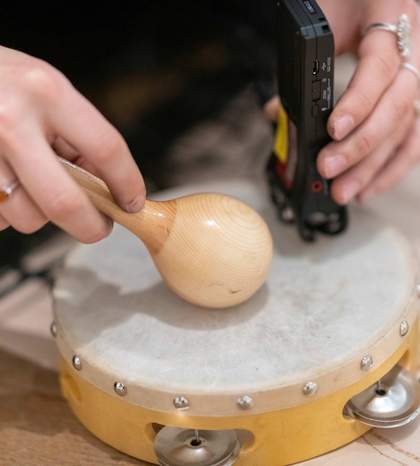
Photo © Tate (Sam Day)
"If you’re sitting in front of a classroom where you’ve got four or five, or even six different nationalities, the work you show them must really reflect who they are so that they are more engaged in the work and more likely to research something on their own."
Dianne Minnicucci
Dianne's Picks
Dianne has selected additional works from the Tate collection that relate to Black histories and identities. Use them as inspiration or bring them into your classroom.
-
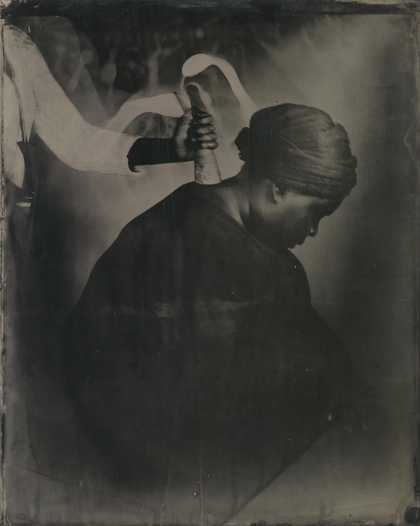
Nak Bejjen
Khadija Saye2017 -
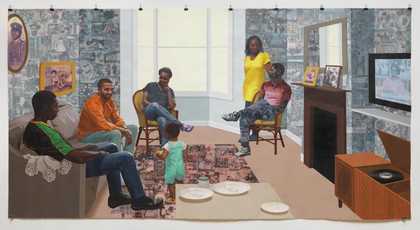
Remain, Thriving
Njideka Akunyili Crosby2018
How to use Teacher Spotlights
This resource offers a modular flexible approach: use the prompts and activities as a full sequence of lessons, choose a single idea to adapt for your classroom.
Teacher Spotlight resources are designed to increase your confidence in using Tate’s evolving collection to engage with big conversations in your classroom. Each resource is co-created with an expert teacher and shares real world examples of how they have successfully used the artworks in their teaching.
You are invited to draw inspiration and nourish your practice by seeing how other teachers approach working with artists and artworks in the classroom.

